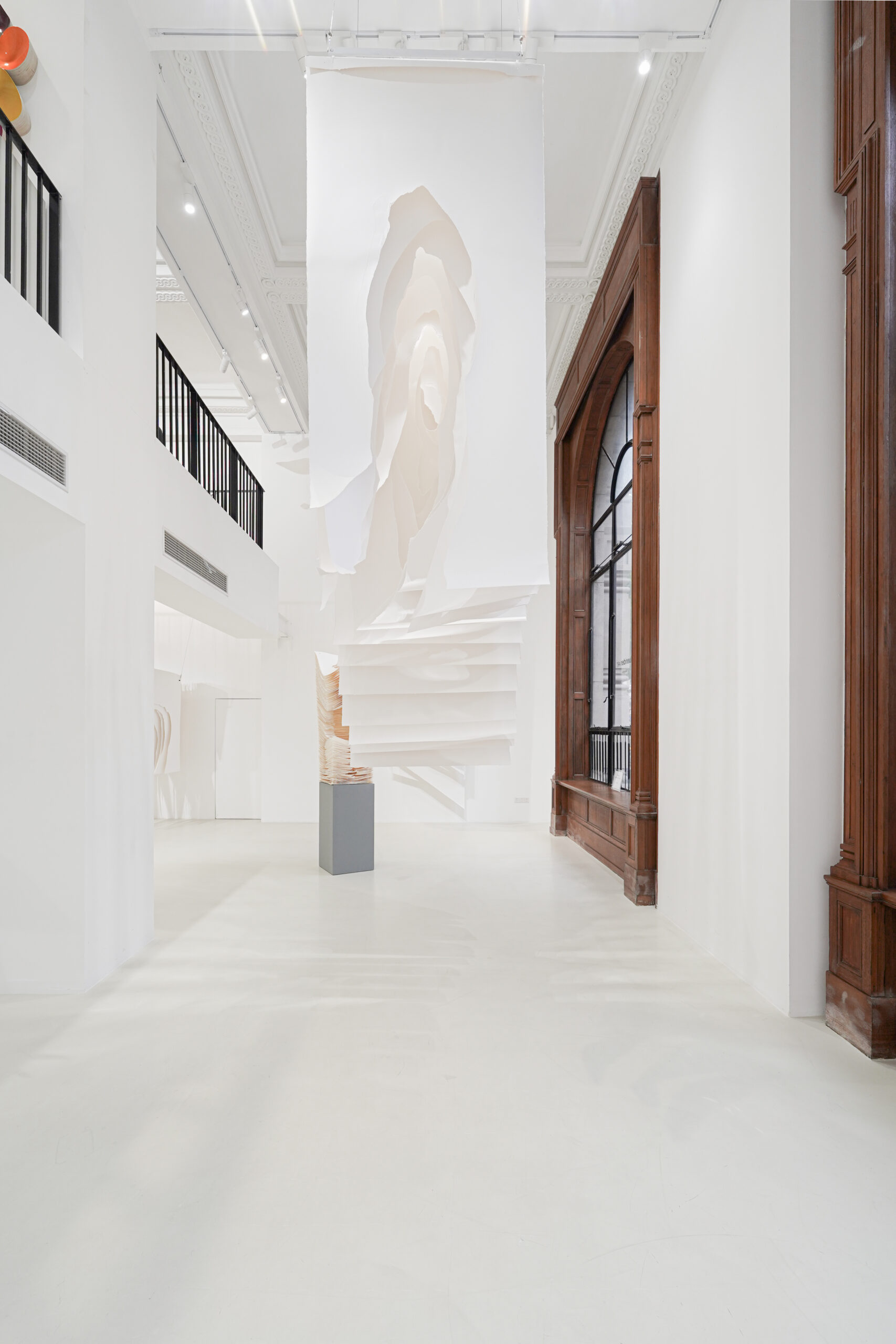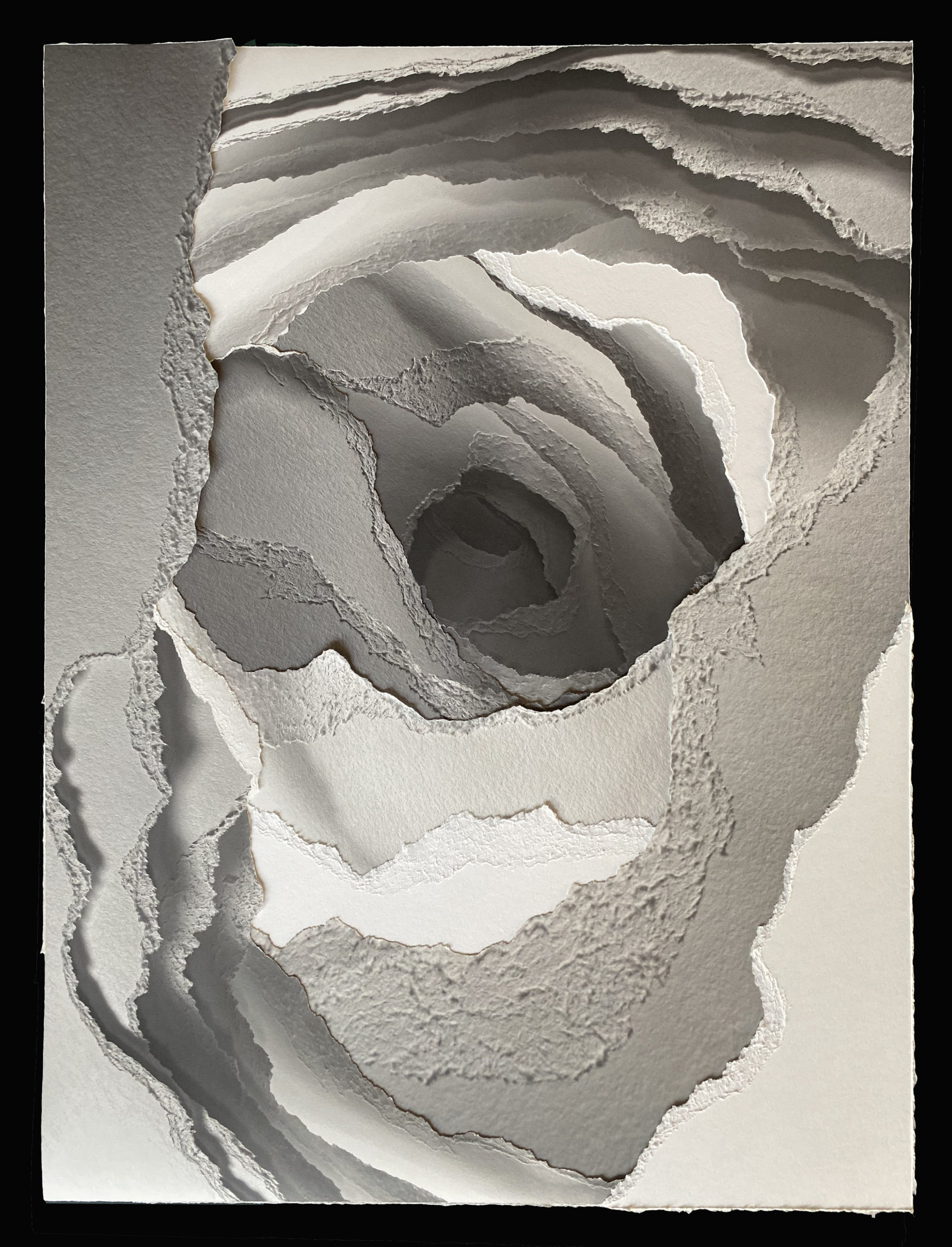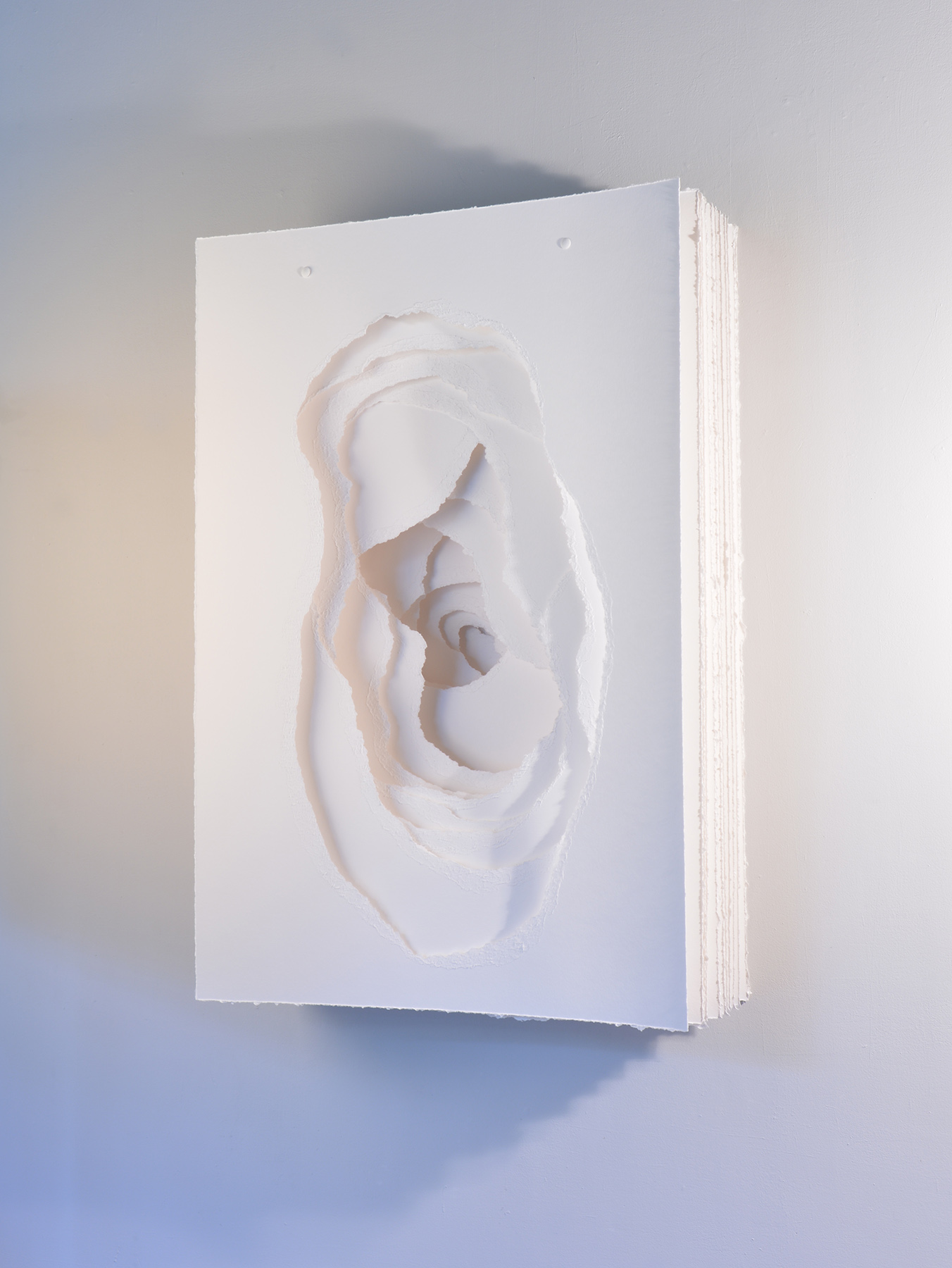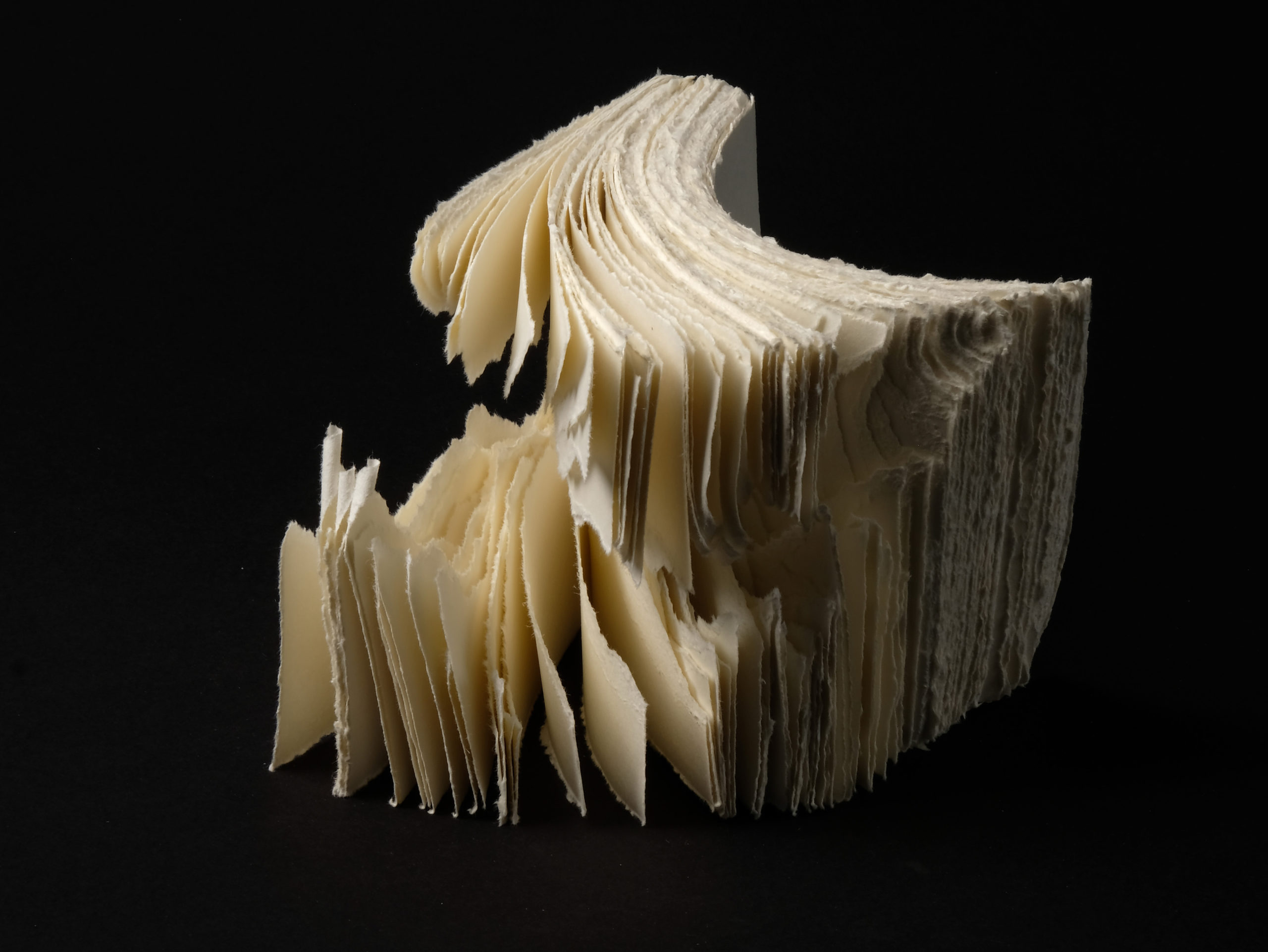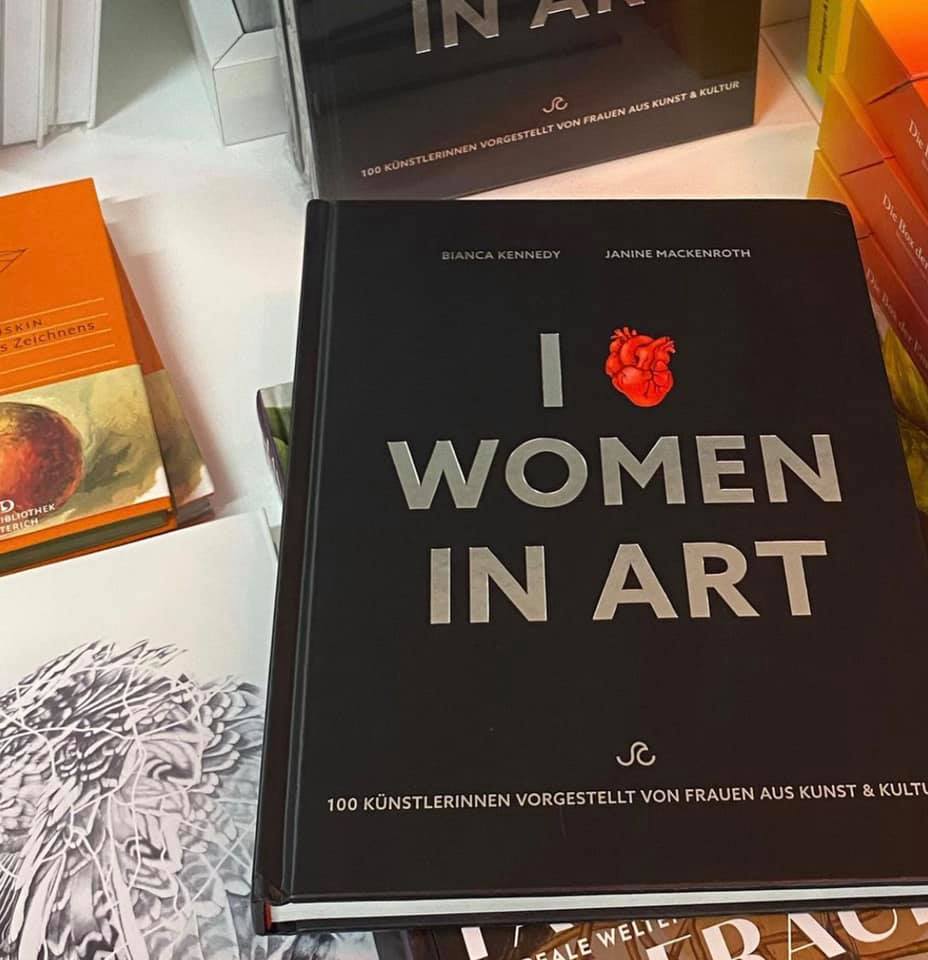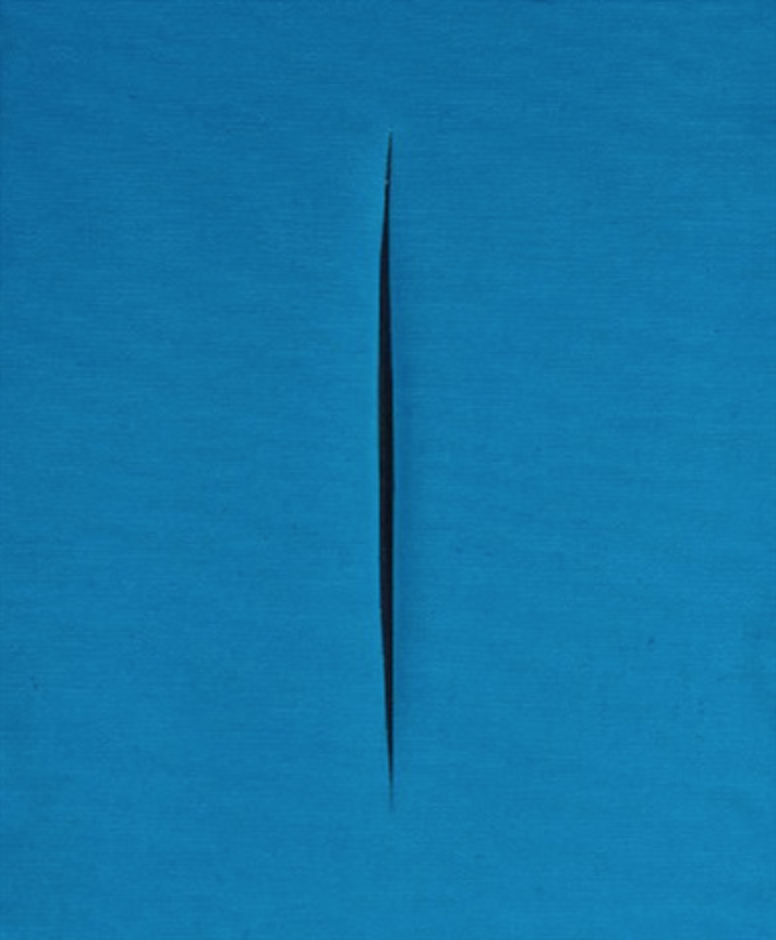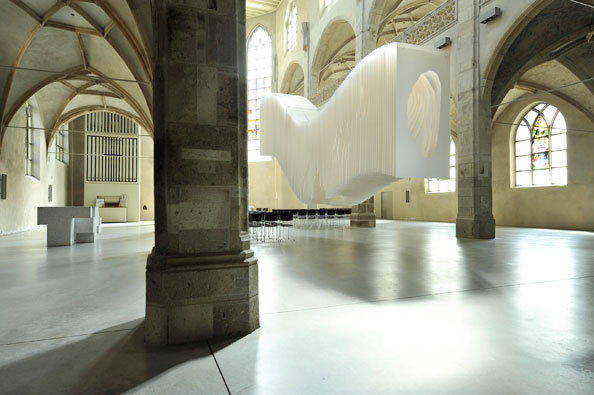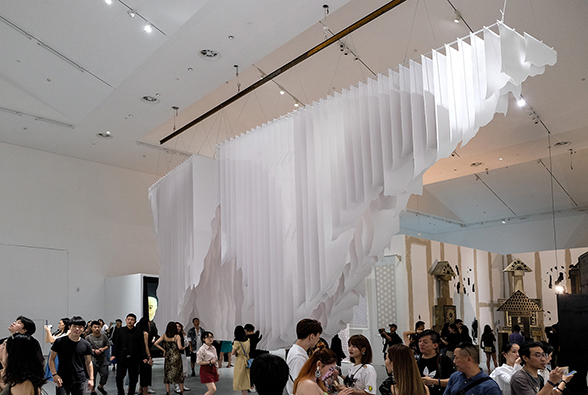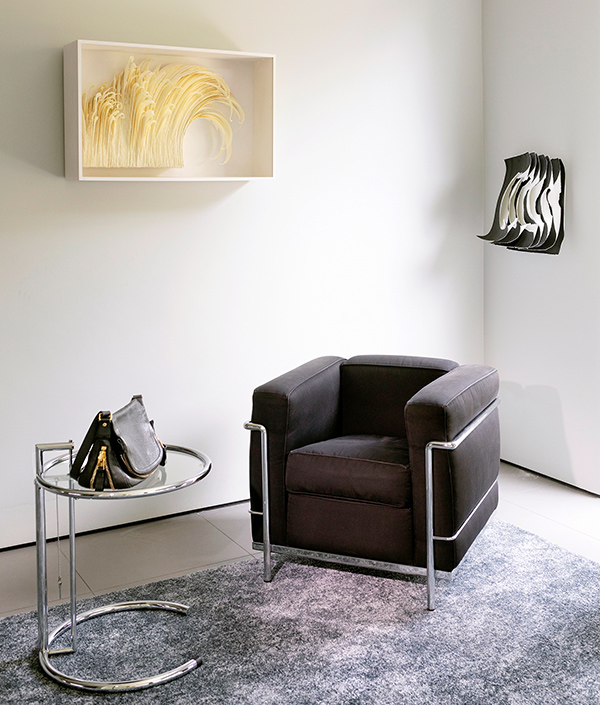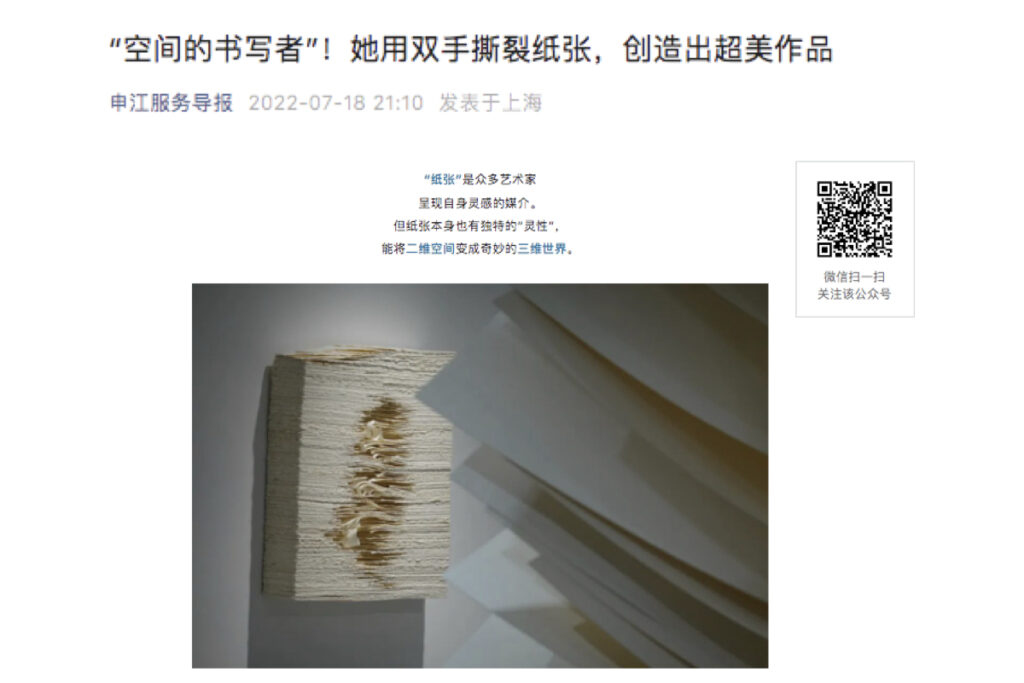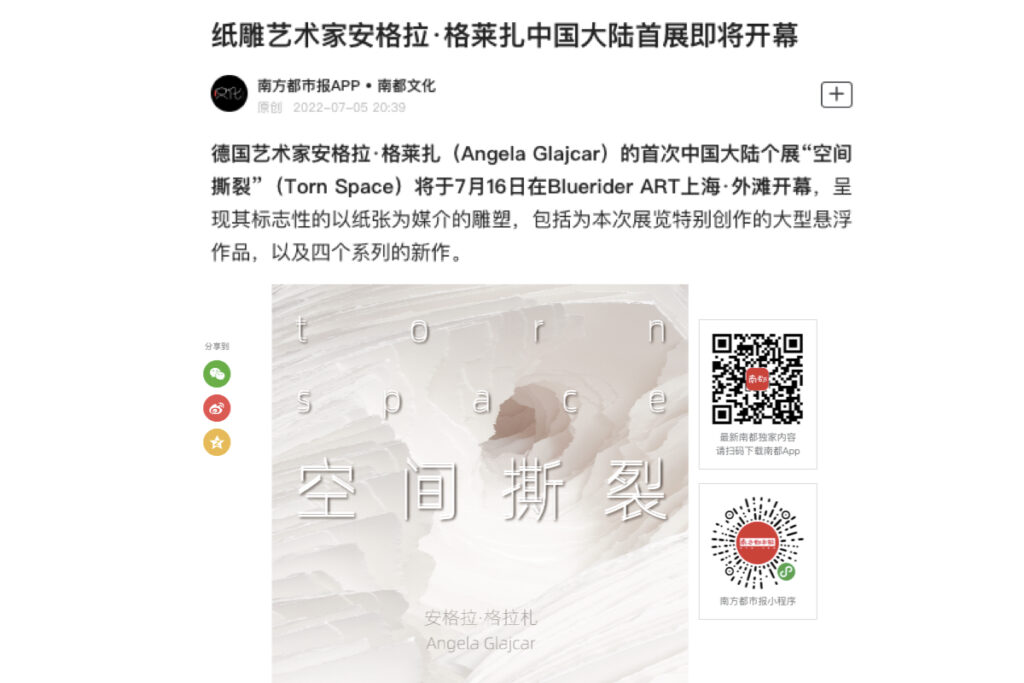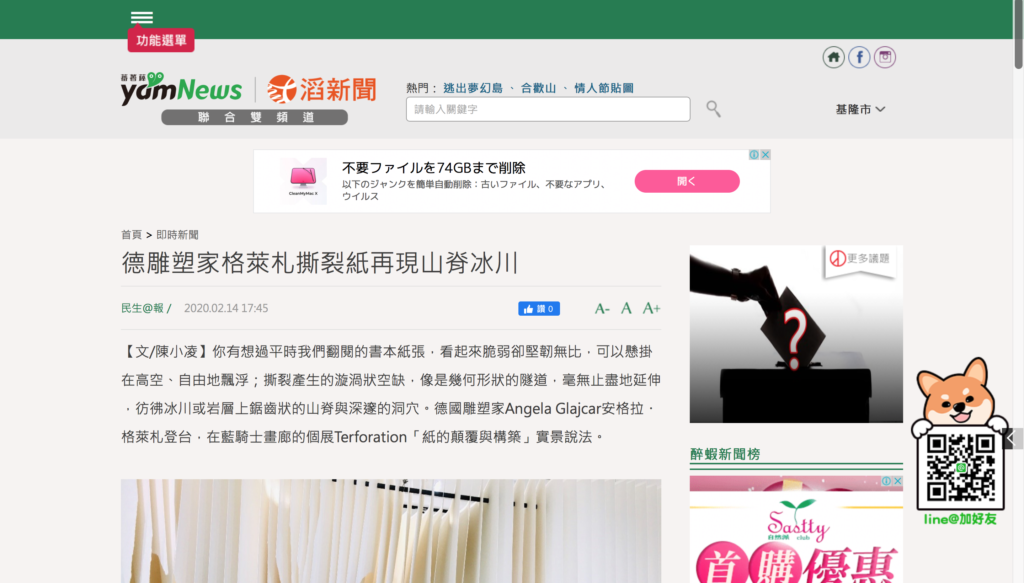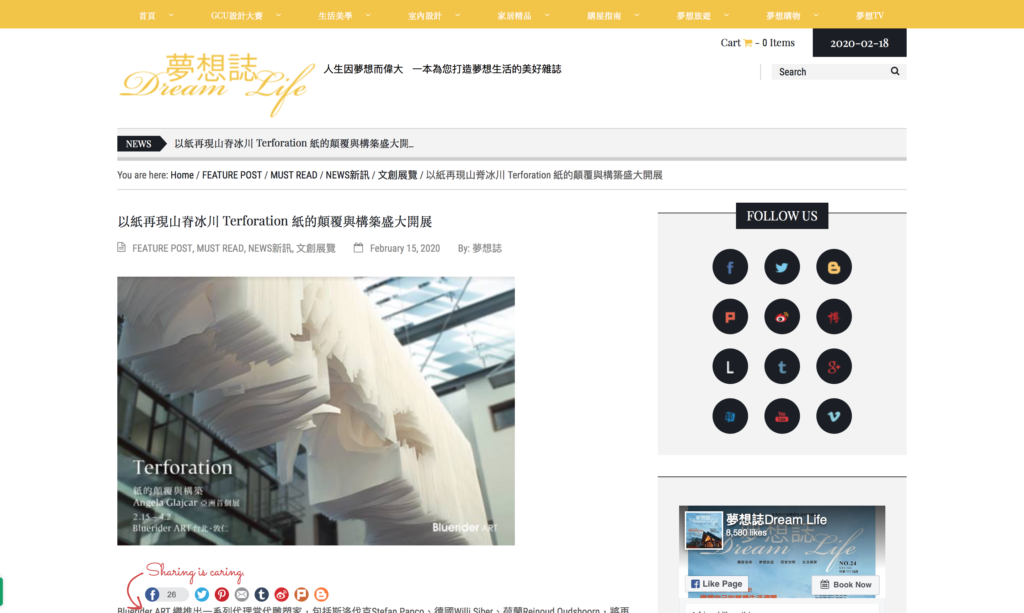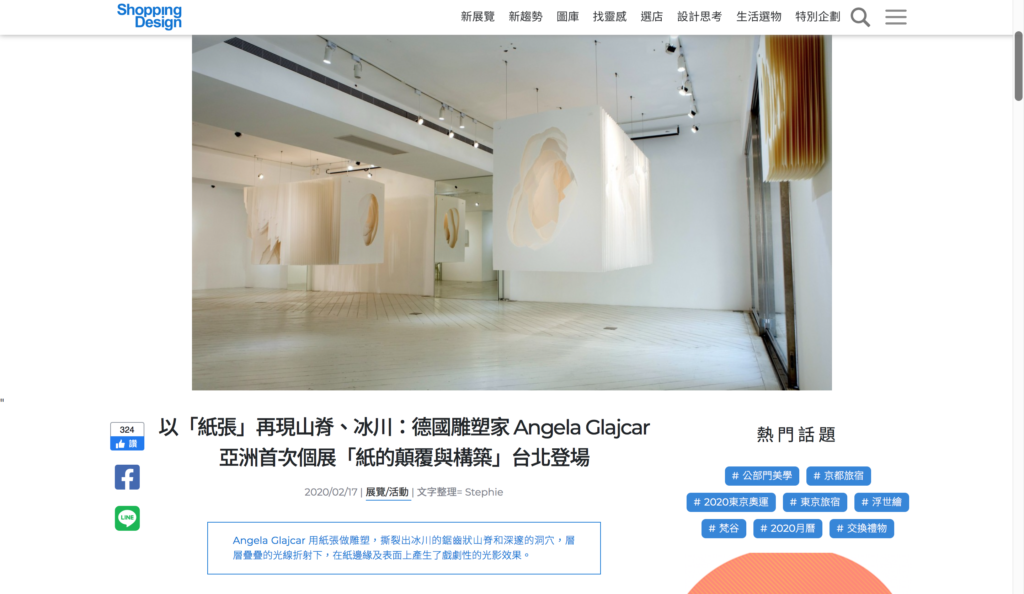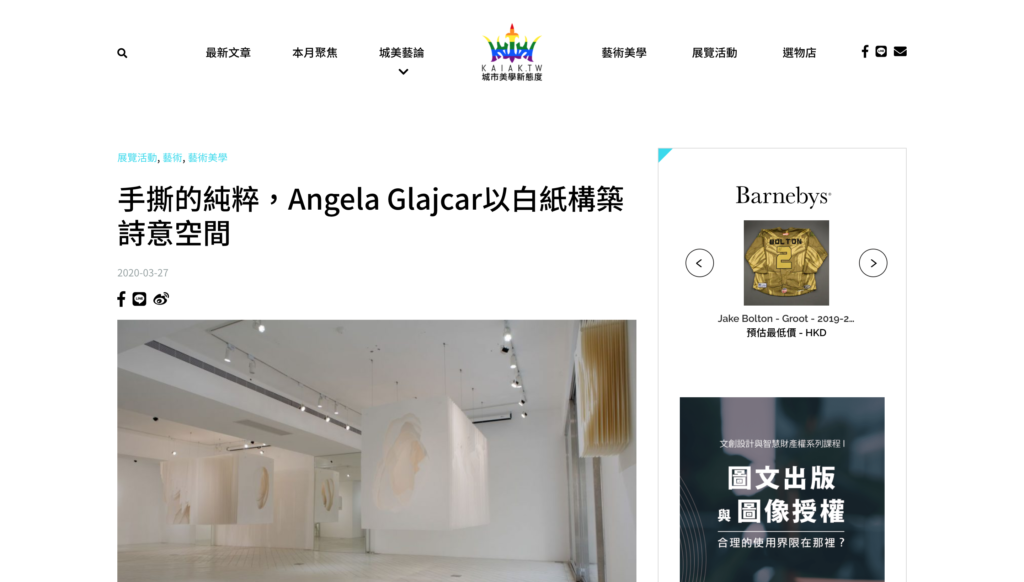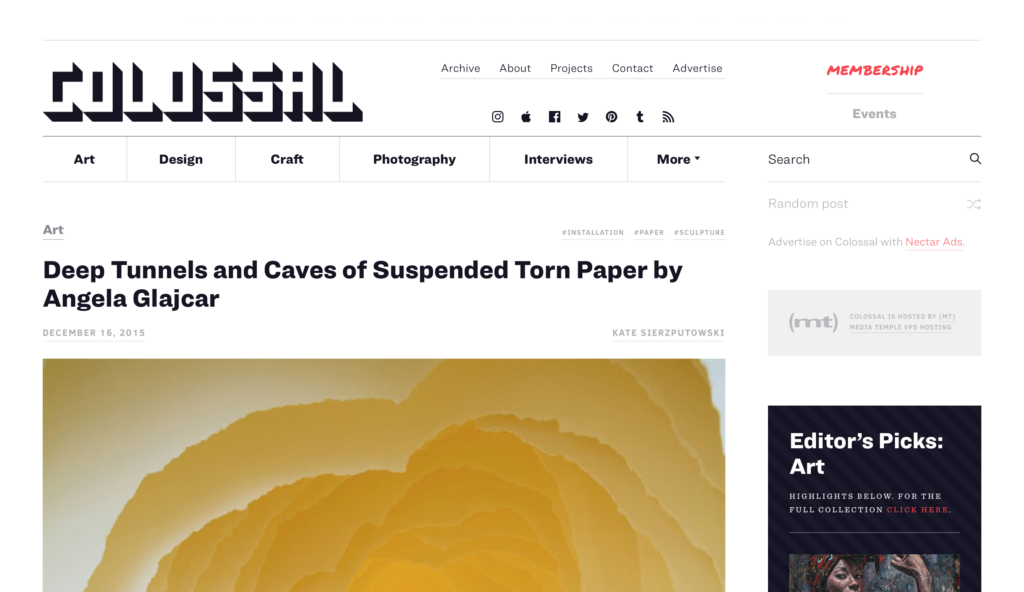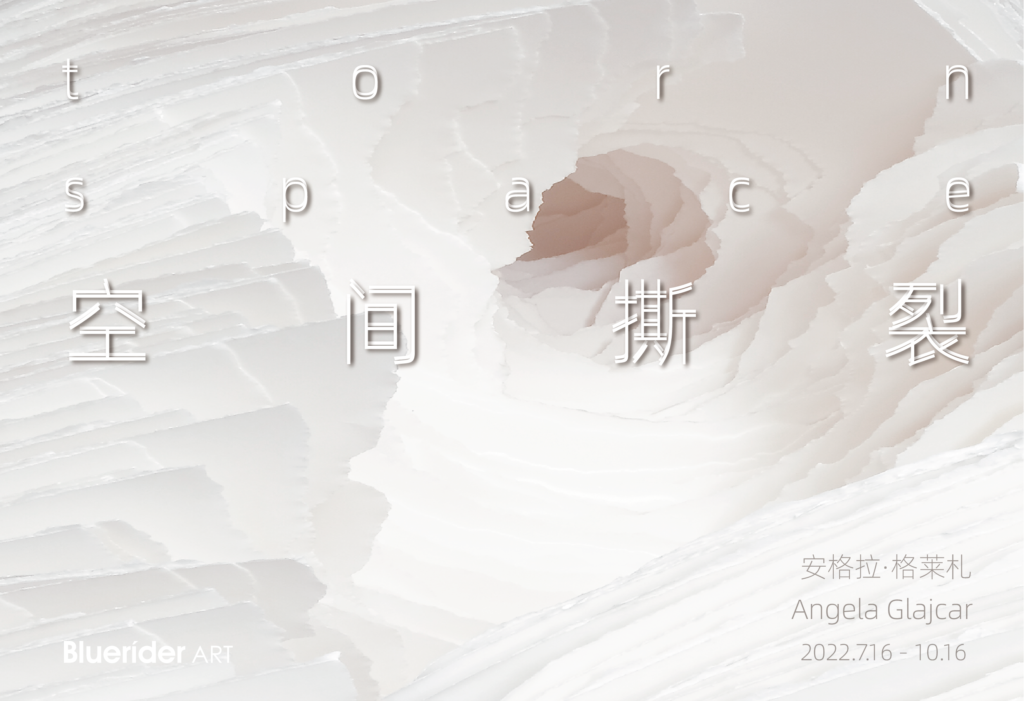

(Germany, b. 1970)
安格拉·格萊扎 Angela Glajcar (德,b.1970),德國紐倫堡美術學院藝術碩士,現居住創作於德國。 曾說 「我是空間的書寫者」的安格拉·格萊扎Angela Glajcar顛覆傳統,以紙為創作媒材,以雙手撕裂紙形塑作品,透過紙本身的純粹、質量、色澤、重新構築單色紙、空間、與光影間的對話,創出多重空間,開啓觀者進入異想世界之門。作品於眾多大型公共空間,如科隆聖彼得大教堂、法蘭克福市文化部、傑克遜維爾當代藝術博物館、美因茨古騰堡博物館等展出,作品永久收藏於美國傑克遜維爾當代藝術博物館、德國威斯巴登博物館、德國美因茨藝術 與科學中心和奧地利的漢滕施密特家族等。
The 11th From Lausanne to Beijing Fiber Art Biennale Excellence Award: Angela Glajcar以作品Terforation 2020-001自54國千人中脫穎,榮獲國際評審團第11屆 “從洛桑到北京” 國際纖維藝術雙年展優秀獎,並於北京清華大學藝術博物館線上展出作品。
獲選代表德國,參展National Museum Of Women In The Arts (NMWA) PAPER ROUTES 美國國家女性藝術博物館,第六屆國際紙的旅程展。作品收錄於National Museum Of Women In The Arts (NMWA) 美國國家女性藝術博物館出版 ’I ❤️WOMEN IN ART’ 表彰女性藝術貢獻。NMWA是全球唯一表彰女性藝術貢獻的大型博物館 Oct.8, 2020 -Jan.18, 2021


2022 Gustav-Lübcke-Museum, Hamm Germany Faszination Papier 

2019 Lunar Sonata : Hanji Works and Contemporary Art, Jeonbuk Museum of Art South Korea
德國美術館紙的秘密展Museum Schloss Burgau GEHEIMNIS PAPIER Oct.18-Nov.18, 2020
做為一位前衛雕塑家,安格拉·格萊扎Angela Glajcar曾接受知名英國雕塑家Tim Scott的指導,早期以鋼鐵、木質或玻璃纖維等材料創作,近年則專注使用「紙」的材質創作。她的創作理念,除了探索紙媒材,並具有顛覆傳統及構築空間的雙重特性,透過紙作品帶來的質量色感,創造空間光影變化及氛圍。使用特殊防潮防酸百年紙廠工業紙,跳脫傳統對紙細膩、柔軟的觀念,格萊扎Glajcar以雙手撕出多變的幾何塊面及延伸性立體作品,配合展出的場域,改變觀者在空間中的觀看方式,產生奇妙的視覺體驗,視角觀點,令紙雕塑展現其特有的多重能量。同時,紙作為材料,吸收了周圍環境的光與色,因溫濕度產生捲曲,擁有一種暫時性的變化,單色的紙因反射周圍光線,突顯細膩色彩,格萊扎Glajcar 讓紙自由地在空間中飛翔,綻放它的姿態及溫暖。
紙,在繪畫史中通常作為載具,紙的作品總以平面視角觀看、並創造虛構的透視視角。紙當然也可作為雕塑的材料,畢卡索就曾巧妙運用紙結合線稿做立體雕塑,作品 Head of a Woman, Mougins (1962)。Angela Glajcar 直接讓紙作為雕塑材質,顛覆傳統柔軟認知,讓它擁有光影變化、空間節奏及重量。在雕塑的意義上,極簡主義(Minimalism)將型態或色彩純粹化,藝術家 Donald Clarence Judd (1928-1994)在 1965 年所發表的概念特定物件(Specific Object),便將型態或色彩影響降低至最極限,作品非繪畫也非雕塑,而是特定物體,呈現作品「此時此刻、存在於此」的當下狀態。Glajcar 的作品,使用單一材質、單色的紙,突出紙的純粹性,而她再進一步顛覆這樣的純粹性,讓造型與空間更多變化,產生觀看的戲劇性效果。當我們對照空間藝術家 Lucio Fontana (1899-1968),在畫布上畫一刀的作品 Concetto Spaziale, Attesa (1965),企圖把平面繪畫及框外空間的界線打破,藉此挑釁觀者對「繪畫—雕塑—空間」的構築、想像與再出發。Glajcar 的雕塑則帶給觀者「空洞」的延伸𩐳律,透過精確的撕裂空洞,光線得以進入洞中,觀者看到由光影構築的多重空間,開啟對四度空間的想像。透過紙的顛覆、與空洞的撕裂、構築,意味著一種破壞性,在真實空間留下了傷痕。
德國藝術史學家暨沃爾夫斯堡藝術博物館館長Andreas Beitin 便認為 Glajcar 的作品具有深層的思辨,她對於人類存在的課題提出相反的兩個面向: 動態與靜態、美麗與毀壞、光亮與沉重、律動與安靜。因為紙的本質,脆弱卻堅韌,誰能想到平時所翻閱的書本及紙張,可以懸掛在高空、自由地飄浮。撕裂產生的漩渦狀空缺,像是幾何形狀的隧道,毫無止盡地延伸,彷彿冰川或岩層上鋸齒狀的山脊與深邃的洞穴。Angela Glajcar 的作品關乎我們所生活的空間、環境,並展現「紙」在光線、動態、時間、聲音的多種面貌,如此堅韌又如此自由奔放。透過紙的顛覆與構築,作品在此成全超乎現實所有的想像。
2009-072 Terforation (space), 2009. Paper, structural steelwork. 400 x 125 x 1050 cm, 2009年於科隆聖彼得大教堂展出,也是Angela Glajcar 首次在教堂內進行創作。在這擁有近500年歷史的建築物中,150張 250 x 130 公分的大型紙張懸掛在波浪型的金屬結構上,透過精確的撕裂空洞,光線得以進入洞中,於教堂的禮拜者也得以由作品下方感受藝術家撕裂出的視角窺探建築。
2019-035 Terforation In-site installation, 2019. 300g torn paper, Bracket made of metal. 500 x 1200 x 250 cm, 2019年於上海寶龍美術館展出的作品,再次以靈巧的雙手賦予紙深度,Angela Glajcar手撕紙張,將龐大數量的紙張聚集組成如波浪又似冰川的巨型裝置,並以空間內的光影來建構作品型態,投射在作品上的燈光看似虛無,卻真實存在,與龐大的作品量體共同成就一場「超現實」的夢,也以展覽名稱「以夢為陸」相呼應。


Terforation 2015-056, 德國波鴻博物館(Kunstmuseum Bochum, Germany), 100 x 140 x 500 cm, Paper 400g, torn, metal mounting and plastic 
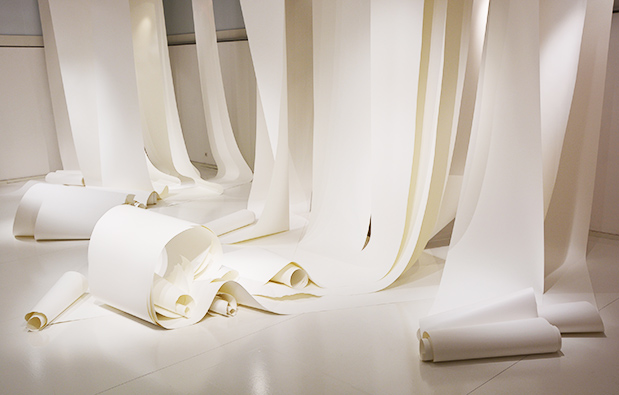
Arsis 2015-054, 德國古滕貝格博物館(Gutenberg Museum, Germany), 尺寸依場域而定, paper 350g, torn, screwed, metal mounting 

Terforation 2012-014, 美國華盛頓博物館(Museum Washingtonn, U.S.A.), 140 x 100 x 500 cm, Paper 350g, torn, metal mounting and plastic 

Montcanus 2011-072, 德國阿勒黑裏根教堂(Church Allerheiligen, Germany), 650 x 156 x 1500 cm, glass fabric, 170g, cut, metal
Bluerider ART上海·外灘 「空間撕裂Torn Space」- 安格拉·格萊扎Angela Glajcar 中國首個展,是繼Bluerider ART 「紙的顛覆與構築Terforation」台北個展後,又一次藝術家全新大型個展。展出作品包含特別為Bluerider ART 上海·外灘七米挑高空間,創作數幅3米-4米大型懸浮作品,以及四個系列作品:盒系列Conballare、山火系列Montcanus、孔洞系列Terforation、撕裂的肖像系列Torn Portrait。盒系列 ‘Conballare’ 義大利語(盒),以溫州紙(溫州皮紙,史稱蠲juān紙,唐代起即已列為貢品) ,溫州皮紙採用桑樹皮為原料,紙質比較韌,且一面光一面糙。由於紙紋特殊能夠打造出更為特殊的肌理效果,紙張可做到薄如蟬翼而不破。山火系列‘Montcanus’,為法語Montage(山巒)與拉丁語Vulcanus(火山)的結合,作品像火山噴發的瞬間,將本因重力下墜的紙張,逆向創造出一種向上的延伸感。孔洞系列 ‘Terforation’ 一字源自拉丁文的組合,Terra(土地)、Foramen(孔),透過紙的裂孔表現光影與空間,層層堆疊的紙,形成大理石般的厚重,撕裂邊緣通過光線折射,在孔洞中產生了戲劇性的光影效果,創造動人的韻律感。 撕裂的肖像系列 ‘Torn Portrait ’,是2022新發展系列,藝術家根據Terforation作品攝影輸出,而後在輸出的紙面上進行二次撕裂再拼貼的創作,呈現不同紙質組合的容貌。‘撕裂空間Torn Space ’ 2022年大型個展,將以紙的百變精靈,有如在宇宙中穿梭,為觀者打開一道道神奇,通往探索多維度空間之門。
Solo Exhibitions
2022 Torn space ,Bluerider Art Shanghai (CHN)
2022 Scale Matters,Karin Weber Gallery Hong Kong (CHN)
2021 Angela Glajcar : “Papier fâché” ,Stream Art Gallery, Brussels (BE)
2021 Scale Matters 2021-006, Site specific installations, private collection, Wien (AUT)
2020 my silence is my self defense, K.Oss Gallery, Detroit (USA)
2020 Terforation, Bluerider Gallery, Taipeh (TWN)
2020 we are talking about the space between us, Galerie Martin Kudlek, Köln (DE)
2019 Terforation, Galerie Philippe David, Zürich (CH)
2019 blanco y nero, Galerie Marita Segovia, Madrid (ES)
2019 snowblind, Galerie Nanna Preußners, Hamburg (DE)
2019 torn space, Galerie Utermann, Dortmund (DE)
2018 carte blanche, Les 3 Cha centre d‘art, Châteaugiron (Fr)
2018 Plateau München, Heitsch Gallery, München (DE)
2018 Luce e Spazio, MEB Arte Studio, Borgomanero (IT)
2017 Terforation 2.0, Museum Wiesbaden, Wiesbaden (DE)
2017 Layers, Heitsch Gallery, München (DE)
2017 Synthesis, Bromer Kunst, Roggwil (CH)
2016 sensazioni di carta, Galerie Antonella Cattani Contemporary, Bolzano (IT)
2016 terra incognita, Kunstverein Coburg und St. Augustin, Coburg (DE)
2015 Papier ist für die Ewigkeit, Gutenberg-Museum, Mainz (DE)
2015 Weiß ist das neue Schwarz, Heitsch Gallery, München (DE)
2015 white glass, Diana Lowenstein Gallery, Miami (USA)
2015 Terforation, MOCA Jacksonville, Jacksonville (USA)
2015 white, Andipa Gallery, Londen (UK)
2015 Terforation, Galerie Nanna Preußners, Hamburg (DE)
2015 within the light, Southwark Cathedral, London (UK)
2014 white glass, Galerie Kudlek, Köln (DE)
2014 Angela Glajcar Escultura, Espacio Micus Arte Contemporáneo, Ibiza (ES)
2014 summer, Hollis Taggart, New York (USA)
2014 weiss, Kunsthalle zu Kiel, Kiel (DE)
2013 Galerie Nusser & Baumgart, München (DE)
2013 Terforation, Andipa Gallery, London (UK)
2013 Galerie Löhrl, Mönchengladbach (DE)
2013 Galerie Antonella Cattani contemporary art, Bolzano (IT)
2012 pure paper, Kunstverein Münsterland, Coesfeld (DE)
2012 paper and light, Diana Lowenstein Gallery, Miami (USA)
2011 Metall Papier Komplementär, Emsdettener Kunstverein, Emsdetten (DE)
2011 the light within, KunstKulturKirche Allerheiligen, Frankfurt a.M. (DE)
2011 Terforation (rising), KN Studio, Verona (IT)
2011 Curalium, College of the Holy Cross, Worcester (USA)
2010 Carta Spaziale, Grossetti Arte Contemporanea, Milano (IT)
2010 Ad Id Temporis, Sint-Anna-ten-Drieënkerk, Antwerpen (BE)
2009 innen–raum–außen, Galerie Löhrl, Mönchengladbach (DE)
2009 Carta Spaziale, Associazione Margherita Ripamonti, Como (IT)
2009 Ad Tempus, Johanniskirche, Hanau (DE)
2009 Ad Lucem, Kunst-Station Sankt Peter, Köln (DE)
2009 Ge-rissen, Österreichisches Papiermachermuseum, Steyrermühl (AT)
2009 Papierwelten, Kunstverein Hof, Hof (DE)
2009 Arsis, KunstRaum Hüll, Drochtersen-Hüll (DE)
2009 Angela Glajcar Skulpturen, C. Wichtendahl Galerie, Berlin (DE)
2009 Papierwelten, Kunstverein Ludwigshafen, Ludwigshafen (DE)
2009 Monolog | Dialog, Essenheimer Kunstverein, Ingelheim (DE)
2008 secret, Galerie Maurer, Frankfurt a.M. (DE)
2008 Sculptures Célestes, Abbaye d‘Alspach, Kaysersberg (FR)
2008 Angela Glajcar Papier – Dieter Kränzlein Stein, Galerie Roland Aphold, Allschwil-Basel (CH)
2008 Angela Glajcar & Nele Waldert – Skulpturen und Objekte, Galerie Peters-Barenbrock, Ahrenshoop (DE)
2008 Dialogue Poétique, Kunst Forum D‘Art, Vaudrémont (FR)
2008 inside – outside, Kunstverein Siegen, Siegen (DE)
2008 Papier | Schatten – Kunst im Lichthof, Stora Enso Maxau GmbH, Wörth (DE)
2008 Papier lesen, Landesbibliothek, Speyer (DE)
2007 Tänze im Raum – Papierskulpturen und Kunststoffinstallationen, Südwestrundfunk, Mainz (DE)
2007 Angela Glajcar | Lichtblick, Kunstverein Heidenheim, Heidenheim (DE) leichte – schwere. 2007 Angela Glajcar Papierskulpturen, Galerie Maurer, Frankfurt
a.M. (DE)
2007 Angela Glajcar, Galerie von Waldenburg, Waldenburg (DE)
2006 Angela Glajcar Skulpturale Papierobjekte und Installationen, Galerie B. Haasner, Wiesbaden (DE)
2006 Angela Glajcar Terforation, C. Wichtendahl Galerie, Berlin (DE)
2006 Contrarius – Lichtschatten, Schloss Charlottenburg Berlin, Berlin (DE), P 15
2006 Angela Glajcar Papierskulpturen, Up Art Galerie, Neustadt-Haardt (DE)
2006 Terforation, Nassauische Sparkasse, Wiesbaden (DE)
2006 Angela Glajcar Papierarbeiten, Kunstverein Trier Junge Kunst, Trier (DE)
2005 Angela Glajcar Contrarius, C. Wichtendahl Galerie, Berlin (DE)
2005 Angela Glajcar Contrarius, Theater Kleines Haus, Mainz (DE)
2005 Stadtkünstlerin Spaichingen 2005, Forschner-Gebäude, Spaichingen (DE)
2005 Angela Glajcar Papierinstallationen, Galerie Kunsthalle Koblenz, Koblenz (DE)
2004 Glajcar | Landau Malerei und Skulptur, Landtag RLP, Mainz (DE)
2004 Angela Glajcar Contrarius, Kunstverein Friedberg, Friedberg (DE)
2003 Angela Glajcar Skulpturen und Wandobjekte, Galerie B. Haasner, Wiesbaden (DE)
2002 Korrespondenz im Raum, Kunstverein Speyer, Speyer (DE)
2002 Angela Glajcar Zonta Kunstpreis 2002, Kulturschmiede, Nieder-Olm (DE)
2001 Angela Glajcar Skulpturen, Schloss Waldthausen, Mainz (DE)
2000 Angela Glajcar Skulpturen in Holz und Stahl, Galerie Haus Eichenmüller, Lemgo (DE)
2000 Noyane Holzskulpturen 1999/2000 Angela Glajcar, Haus Metternich, Koblenz (DE), P 2
2000 Angela Glajcar Skulpturen in Holz und Stahl, Galerie Eva Tent, Koblenz (DE)
2000 Skulpturenausstellung mit Werken von Angela Glajcar, Wernerkapelle, Bacharach (DE)
Group Exhibitions
2023 Homeland Universe, Bluerider ART, London (UK)
2022 Cut, Torn and Folded,Galerie Martin Kudlek Köln (DE)
2022 The Abstract Landscape,Galerie Kellermann Düsseldorf (DE)
2022 Arte sobre papel,Galeria Marita Segovia, Madrid (ES
2022 Art Düsseldorf 2022,Galerie Löhrl (DE) // Galerie Utermann (DE)
2022 Miniartextil, Arte & Arte,M4 Mairie de Montrouge (FR)
2022 International Paper Biennale, Changchun (CHN)
2021 Lunar Sonata,Hanji Works and Contemporary Art,Jeonbuk Museum of Art South Korea (KOR)
2021 Papier im Raum – Spatial Paper, Haus des Papiers, Berlin (DE)
2021 Vier Elemente,Galerie Löhrl, Mönchengladbach (DE)
2021 The Sensible Practice, Galeria Antonella Cattani Contemporary Art, Bozen (IT)
2021 ARTE SOBRE PAPEL,Galeria Marita Segovia, Madrid (ES)
2020 paper routes – women to watch 2020, NMWA National Museum of Women in the Arts, Washington (USA)
2020 Künstlerinnen in der Bochumer Kunstsammlung, Kunstmuseum Bochum (DE)
2020 Geheimnis Papier, Museum Schloss Burgau, Düren (DE)
2019 one if by land, Powerlong Museum, Shanghai (CHN)
2019 Cheongju Craft Biennale 2019, Cheongju (KOR)
2019 Prospect, Sharjah Art Museum, Sharjah (U.A.E.)
2018 weiss, Galerie Sebastian Fath, Mannheim (DE)
2017 CODA Paper Art, CODA Museum, Apeldoorn (NL)
2017 in the absense of color, Hollis Taggart Galleries, New York (USA)
2017 Bild | Skulptur, Galerie Bechter Kastowsky, Wien (AUT)
2017 dark, liquid. , Kunstverein Tiergarten in der Galerie Nord, Berlin (DE)
2016 schwarz weiss, Galerie Löhrl, Mönchengladbach (DE)
2016 new masters vs modern masters, Heitsch Gallery, München (DE)
2016 shifting surfaces, Karin Weber Gallery, Hong Kong (CHN)
2015 a touch of glass, Karin Weber Gallery, Hong Kong (CHN)
2015 konkret mehr Raum!, Kunsthalle Osnabrück, Osnabrück (DE)
2014 white sensation, Galerie Nanna Preußners, Hamburg (DE)
2014 25th anniversary show, Diana Lowenstein Gallery, Miami (USA)
2014 se dico aria, caleidoscopio, Festival della Arti, Camerano (IT)
2014 impressoni astratte, Museion Bozen, Bolzano (IT)
2013 On the Edge, Cheryl Hazan Gallery, New York (USA)
2013 Zwischen Himmel und Erde, Galerie Martin Kudlek, Köln (DE)
2013 In Between, Museum Kasteel van Gaasbeek, Lennik (BE))
2012 Andipa Gallery, London (UK) Papiergewisper, Galerie Spielvogel, München (DE)
2012 Arbeiten aus Papier, Galerie Splettstößer, Kaarst (DE)
2012 just paper, Kunstverein Marburg, Marburg (DE)
2012 Papierarbeiten 3, Galerie Maurer, Frankfurt a.M. (DE)
2012 oltre l‘attimo, Grossetti Arte Contemporanea, Milano (IT)
2012 Künstlerfreunde, Kunstverein Speyer, Speyer (DE)
2011 terra incognita. Weltbilder – Welterfahrungen, ALTANA Galerie, Dresden (DE)
2011 Papier=Kunst 7, Neuer Kunstverein Aschaffenburg, Aschaffenburg (DE)
2011 my collection 1916 | 2011, Grossetti Arte Contemporanea, Milano (IT)
2011 Schönheit und Natur, Wasserstandsturm, Bingen (DE)
2011 Vivere e pensare in carta e cartone: tra arte e Design, Museo Diocesano Milano, Milano (IT)
2011 30 Jahre Galerie Löhrl in Mönchengladbach, Galerie Löhrl, Mönchengladbach (DE)
2010 Sammlung Dellwing Speyer, Städtische Galerie, Speyer (DE), P 31
2010 white meditation room, Grossetti Arte Contemporanea, Milano (IT)
2010 Papierarbeiten 2, Galerie Maurer, Frankfurt a.M. (DE)
2010 miniartextil, San Francesco, Como (IT)
2010 Regionale 2010, Wilhelm-Hack-Museum, Ludwigshafen (DE)
2010 sans papier – sons papier, Politecnico di Milano, Milano (IT)
2010 paperworks, C. Wichtendahl Galerie, Berlin (DE)
2009 Collagen. Sammeln, Kunstverein Augsburg, Augsburg (DE)
2009 Papierarbeiten, Galerie Maurer, Frankfurt a.M. (DE)
2009 all about light, C. Wichtendahl Galerie, Berlin (DE)
2009 Qui é altrove, Fondazione Malvina Menegaz, Castelbasso (IT)
2009 Papierobjekte, Haus der Modernen Kunst, Staufen-Grunern (DE)
2009 focus, Grossetti Arte Contemporanea, Milano (IT)
2008 Papierkunstjahr, Buchladen im Roten Haus, Titisee-Neustadt (DE)
2008 Open Air 19. Skulpturenausstellung der Darmstädter Sezession, Ziegelhütte, Darmstadt (DE) 2008 Exposición Colectiva, Galeria Marita Segovia, Madrid (ES)
2008 Holland Papier Biennale 2008, Museum Rijswijk und CODA Apeldoorn, Rijswijk und Apeldoorn (NL)
2008 Papier und Raum, Galerie Thomas, München (DE)
2007 Geometrisk Abstraktion XXVI, Konstruktiv Tendens, Stockholm (SE)
2007 Kunst im Schloss, Schloss Wertingen, Wertingen (DE)
2007 Schnitt | Riss, C. Wichtendahl Galerie, Berlin (DE) plus.
2007 Stipendiatinnen und Stipendiaten der Stiftung Vordemberge-Gildewart 1994–2007, Museum Wiesbaden und Nassauischer Kunstverein, Wiesbaden (DE)
2007 Faszination Papier, Kunstverein Nördlingen, Nördlingen (DE)
2007 schwebend hovering, Galerie Dorothea van der Koelen, Mainz (DE)
2006 Papierarbeiten – Paperworks, C. Wichtendahl Galerie, Berlin (DE)
2006 Raumtäuschungen, Kahnweilerhaus, Rockenhausen (DE)
2005 Papier, Künstlerverein Walkmühle, Wiesbaden (DE)
2005 20 Jahre Galerie B. Haasner, Wiesbaden (DE)
2005 60 Jahre Pfälzische Sezession, Städtische Galerie Speyer und Landesvertretung Rheinland-Pfalz, Speyer, Berlin (DE)
2005 Papier=Kunst 5, Neuer Kunstverein Aschaffenburg, Aschaffenburg (DE)
2005 Junge Rheinland-Pfälzer Künstlerinnen und Künstler – Emy-Roeder-Preis 2005, Kunstverein Ludwigshafen, Ludwigshafen (DE)
2004 Sinn_Flut, Essenheimer Kunstverein, Ingelheim (DE)
2004 Gutsherrinnen, Frauenmuseum Bonn, Bonn (DE)
2003 Junge Rheinland-Pfälzer Künstlerinnen und Künstler – Emy-Roeder-Preis 2003, Wilhelm-
Hack-Museum, Ludwigshafen (DE)
2003 Grafik – Malerei – Plastik, Galerie B. Haasner, Wiesbaden (DE)
2003 Förderpreis der Stadt Mainz für Bildende Kunst 2003 – Ausstellung der
2003 Kandidatinnen und Kandidaten, Galerie der Stadt Mainz im Brückenturm, Mainz (DE)
2001 Drei starke Frauen, Kunstverein Bad Dürkheim, Bad Dürkheim (DE)
2001 Form wofür – what for, Pegnitzlofts, Nürnberg (DE)
2000 Gastspiel Darmstädter Sezession, Ziegelhütte, Darmstadt (DE)
2000 Mainzer Skulpturenpark, Volkspark, Mainz (DE)
Awards
1998 Workshop Prize of the Kunststiftung Erich Hauser
1999-2000 Asterstein scholarship of the state of Rhineland-Palatinate
2001-2002 project scholarship “Correspondence in Space”
2001-2002 Bavarian Ministry of Culture
2002 Zonta Art Award Mainz
2004 Vordemberge Gildewart Fellowship
2005 Emy Roeder Prize
2006 Phoenix Art Award
2010 Audience Award of the Regionale in the Wilhelm Hack Museum, Ludwigshafen
2014-2015 city printer Mainz
2021 Paper Art Award 2021, Haus des Papiers Berlin














